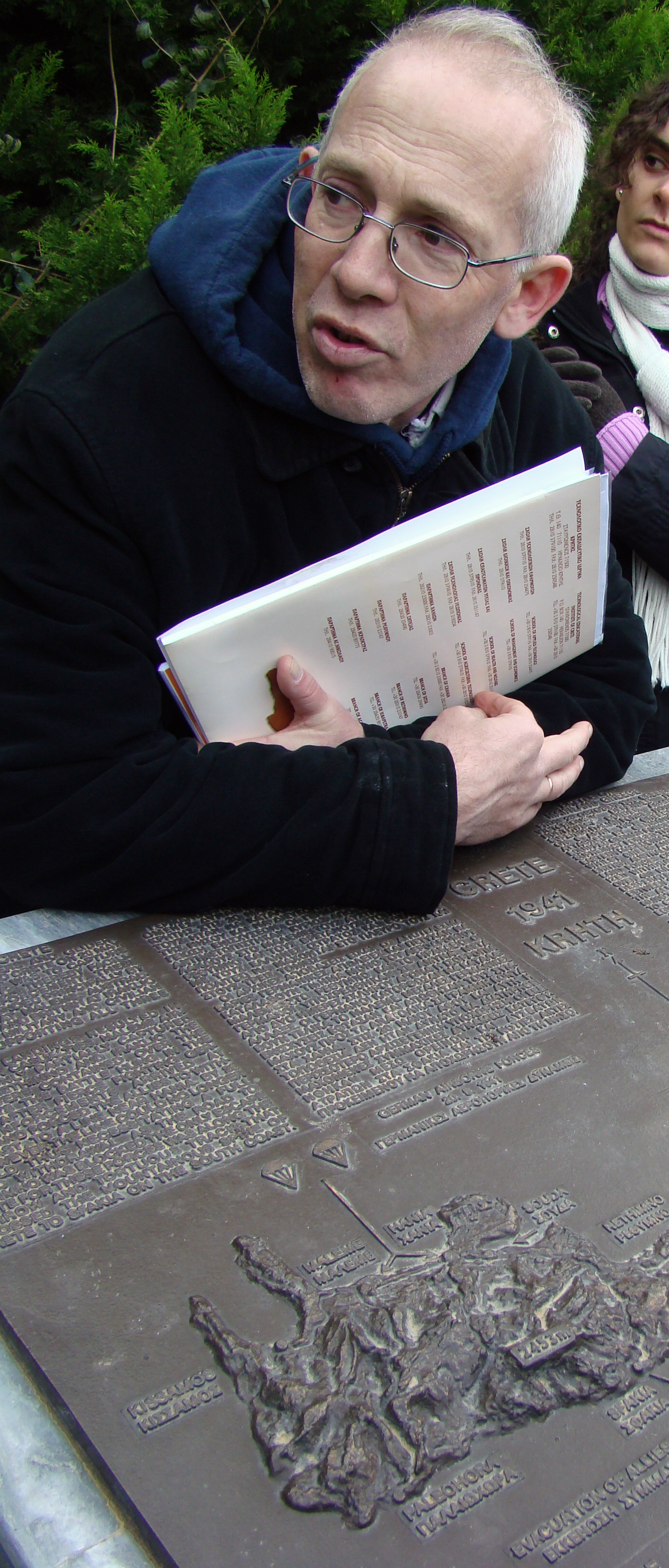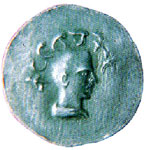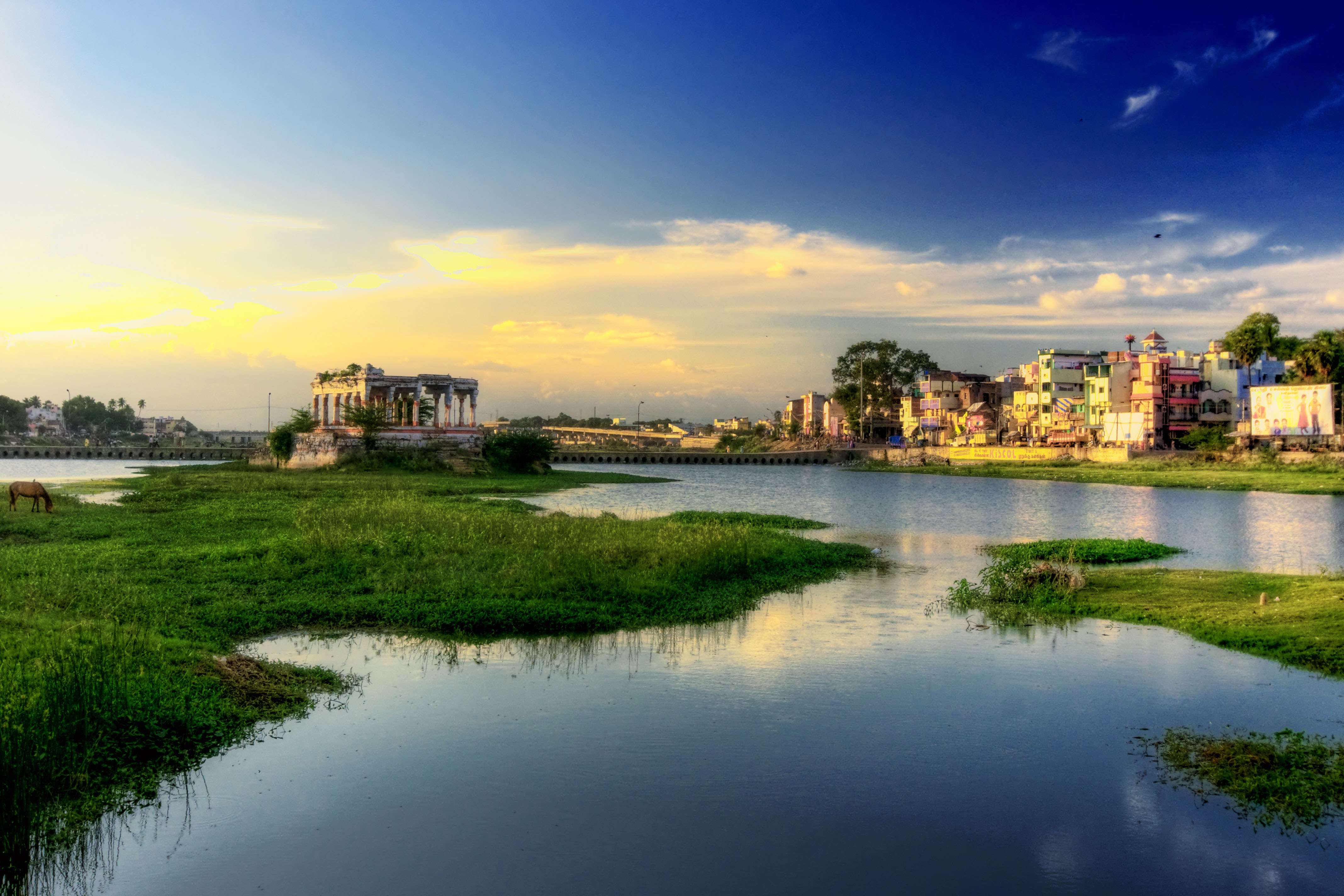|
Kuadam
Kuadam (also known as Kua or more popularly Kapadapuram) was the capital of the ancient Pandian kingdom of the Meen'Koodal epoch (the second Sangam academy). The grand old poet and sage Nakkeerar and the Iraiyanaar porul'urai mentions that Kuadam was the capital from c.5400 BCE to c.1750 BCE (about 3650 years). According to historians, Kuadam was very close to Tiruchendur. Abraham Pandithar says that Greeks in those days named it as Periplus port. Around 1750 BCE, the last great deluge flooded Kuadam and the remaining part of the Kumari kaandam forever (similar to the Biblical record of "the flood" sometime between 3402 BC and 2462 BC). Kuadam was to the north of the ancient Paqruli river about 700 kaadham south of the Kumari river delta. Cataclysms mid-2000 BCE and similarities Another ancient city lost to cataclysm in mid-2nd millennium BCE is Kapata modern day Crete. The Bible mentions this city as "Caphtor" or "Capthor" as the country of the Philistines. In the t ... [...More Info...] [...Related Items...] OR: [Wikipedia] [Google] [Baidu] |
Tamil Sangams
The Tamil Sangams (Tamil: சங்கம் ''caṅkam'', Old Tamil 𑀘𑀗𑁆𑀓𑀫𑁆, from Sanskrit ''saṅgha'') were three legendary gatherings of Tamil scholars and poets that, according to traditional Tamil accounts, occurred in the remote past. Scholars believe that these assemblies were originally known as ''kooṭam'' or "gathering," which was also a name for Madurai. Three assemblies are described. The legend has it that the first two were held in cities since "taken by the sea", the first being called Kapatapuram, and the third was held in the present-day city of Madurai. Historical Sangam period and Sangam literature The historical Sangam period, alluding to the Sangam-legends, extended from roughly 300-200 BCE to 300 CE (early Chola period before the interregnum). In this period the earliest extant works of Tamil literature were written (also known as Sangam literature), dealing with love, war, governance, trade and bereavement.Kamil Veith Zvelebil, ''C ... [...More Info...] [...Related Items...] OR: [Wikipedia] [Google] [Baidu] |
Tirunelveli
Tirunelveli (), also known as Nellai and historically (during British rule) as Tinnevelly, is a major city in the Indian state of Tamil Nadu. It is the administrative headquarters of the Tirunelveli District. It is the fourth-largest municipal corporation in the state after Chennai, Coimbatore, and Madurai. Tirunelveli is located southwest of the state capital Chennai, away from Thoothukudi, and from Kanyakumari. The downtown is located on the west bank of the Thamirabarani River; its twin Palayamkottai is on the east bank. Tirunelveli and its neighbourhood, Palayamkottai, have been called the Oxford of South India for their colleges. It has several important government offices. Tirunelveli is an ancient city, recorded to be more than two millennia old. It has been ruled at different times by the Early Pandyas, the Cheras, the Medieval Cholas and Later Cholas, the later Pandyas, the Vijayanagara Empire and the British. The Polygar War, involving Palaiyakkarars ... [...More Info...] [...Related Items...] OR: [Wikipedia] [Google] [Baidu] |
Gareth Alun Owens
Gareth Alun Owens (born 1964) is a British-Greek academic, currently serving as Associate Director and «Erasmus/Socrates» Manager/Tutor of the International Relations Office of thHellenic Mediterranean University(formerly Technological Educational Institute of Crete) and as Associate Professor of Hellenic Culture -- History, Language and Civilization. He is notable for his contributions to Linear B studies and for his attempts to coordinate the efforts of academics to decipher Linear A. Biography Owens read Classics at University College London, completing a master's thesis on Linear B and a thesis on the problem of Linear A for his Ph.D. in archaeology. He has taught at London and at the University of Crete and has authored several publications in both English and modern Greek. Owens is married to a Greek archaeologist (Kalliope Nikolidaki) with whom he frequently collaborates. He has earned the Modern Greek Diploma of Proficiency from the National and Capodistrian Universi ... [...More Info...] [...Related Items...] OR: [Wikipedia] [Google] [Baidu] |
Former Populated Places In India
A former is an object, such as a template, gauge or cutting die, which is used to form something such as a boat's hull. Typically, a former gives shape to a structure that may have complex curvature. A former may become an integral part of the finished structure, as in an aircraft fuselage, or it may be removable, being used in the construction process and then discarded or re-used. Aircraft formers Formers are used in the construction of aircraft fuselage, of which a typical fuselage has a series from the nose cone to the empennage, typically perpendicular to the longitudinal axis of the aircraft. The primary purpose of formers is to establish the shape of the fuselage and reduce the column length of stringers to prevent instability. Formers are typically attached to longerons, which support the skin of the aircraft. The "former-and-longeron" technique (also called stations and stringers) was adopted from boat construction, and was typical of light aircraft built unt ... [...More Info...] [...Related Items...] OR: [Wikipedia] [Google] [Baidu] |
Pandya Dynasty
The Pandya dynasty (), also referred to as the Pandyas of Madurai, was an ancient Tamil dynasty of South India, and among the four great kingdoms of Tamilakam, the other three being the Pallavas, the Cholas and the Cheras. Existing since at least the 4th to 3rd centuries BCE, the dynasty passed through two periods of imperial dominance, the 6th to 10th centuries CE, and under the 'Later Pandyas' (13th to 14th centuries CE). Under Jatavarman Sundara Pandyan I and Maravarman Kulasekara Pandyan I, the Pandyas ruled extensive territories including regions of present-day South India and northern Sri Lanka through vassal states subject to Madurai. The Pandya dynasty is the longest ruling dynasty in the world. The rulers of the three Tamil dynasties were referred to as the " three crowned rulers (the mu-ventar) of the Tamil Region" in the southern part of India. The origin and the timeline of the Pandya dynasty are difficult to establish. The early Pandya chieftains ruled ... [...More Info...] [...Related Items...] OR: [Wikipedia] [Google] [Baidu] |
Pallas (son Of Pandion)
In Greek mythology, Pallas (/ˈpæləs/; Ancient Greek: Πάλλας) was a member of the Athenian royal family. Family Pallas was one of the four sons of the exiled King Pandion II of Athens and Pylia, daughter of King Pylas of Megara. He was the brother of Aegeus, Nisos, Lykos and the wife of Sciron. Mythology Upon the death of Pandion, Pallas and his brothers took control of Athens from Metion, who had seized the throne from Pandion. They divided the government in four but Aegeas became king. Pallas received Paralia or Diacria as his domain, or else he shared the power over several demes with Aegeus. Later, after the death of Aegeas, Pallas tried to take the throne from the rightful heir, his nephew, Theseus, but failed and was killed by him, and so were his fifty children, the Pallantides. In a version endorsed by Servius, Pallas was not a brother, but a son of Aegeus, and thus a brother of Theseus, by whom he was expelled from Attica. He then came to Arcadia, where h ... [...More Info...] [...Related Items...] OR: [Wikipedia] [Google] [Baidu] |
Pallava Dynasty
The Pallava dynasty existed from 275 CE to 897 CE, ruling a significant portion of the Deccan, also known as Tondaimandalam. The Pallavas played a crucial role in shaping in particular southern Indian history and heritage. The dynasty rose to prominence after the downfall of the Satavahana Empire, whom they had formerly served as feudatories. The Pallavas became a major southern Indian power during the reign of Mahendravarman I (600–630 CE) and Narasimhavarman I (630–668 CE), and dominated the southern Telugu region and the northern parts of the Tamil region for about 600 years, until the end of the 9th century. Throughout their reign, they remained in constant conflict with both the Chalukyas of Vatapi to the north, and the Tamil kingdoms of Chola and Pandyas to their south. The Pallavas were finally defeated by the Chola ruler Aditya I in the 9th century CE. The Pallavas are most noted for their patronage of Hindu Vaishnava temple architecture, the fine ... [...More Info...] [...Related Items...] OR: [Wikipedia] [Google] [Baidu] |
Chera Dynasty
The Chera dynasty ( or Cēra, ), also known as Keralaputra, from the early historic or the Sangam period in Tamil-speaking southern India, ruled over parts of present-day states Kerala and Tamil Nadu. The Cheras, known as one of the mu-ventar (the Three Crowned Kings) of Tamilakam (the Tamil Country) alongside the Cholas and Pandyas, have been documented as early as the third century BCE. The Chera country was geographically well placed at the tip of the Indian peninsula to profit from maritime trade via the extensive Indian Ocean networks. Exchange of spices, especially black pepper, with Middle Eastern or Graeco-Roman merchants is attested to in several sources. Chera influence extended over central Kerala and western Tamil Nadu until the end of the early historic period in southern India. The Cheras of the early historical period (c. second century BCE – c. third/fifth century CE) had their capital in interior Tamil country ( Vanchi-Karur, Kongu Nadu), and ports/capit ... [...More Info...] [...Related Items...] OR: [Wikipedia] [Google] [Baidu] |
Pandya
The Pandya dynasty (), also referred to as the Pandyas of Madurai, was an ancient Tamil dynasty of South India, and among the four great kingdoms of Tamilakam, the other three being the Pallavas, the Cholas and the Cheras. Existing since at least the 4th to 3rd centuries BCE, the dynasty passed through two periods of imperial dominance, the 6th to 10th centuries CE, and under the 'Later Pandyas' (13th to 14th centuries CE). Under Jatavarman Sundara Pandyan I and Maravarman Kulasekara Pandyan I, the Pandyas ruled extensive territories including regions of present-day South India and northern Sri Lanka through vassal states subject to Madurai. The Pandya dynasty is the longest ruling dynasty in the world. The rulers of the three Tamil dynasties were referred to as the " three crowned rulers (the mu-ventar) of the Tamil Region" in the southern part of India. The origin and the timeline of the Pandya dynasty are difficult to establish. The early Pandya chieftains ruled ... [...More Info...] [...Related Items...] OR: [Wikipedia] [Google] [Baidu] |
Puranas
Puranas (Merriam-Webster's Encyclopedia of Literature (1995 Edition), Article on "Puranas", , page 915) are a vast genre of Indian literature that include a wide range of topics, especially legends and other traditional lore. The Puranas are known for the intricate layers of symbolism depicted within their stories. Composed originally in Sanskrit and in Languages of India, other Indian languages,John Cort (1993), "An Overview of the Jaina Puranas" in ''Purana Perennis: Reciprocity and Transformation in Hindu and Jaina Texts,'' (Editor: Wendy Doniger), State University of New York Press, , pages 185-204 several of these texts are named after major Hindu deities such as Vishnu, Shiva, Brahma, and Mahadevi, Devi. The Puranic genre of literat ... [...More Info...] [...Related Items...] OR: [Wikipedia] [Google] [Baidu] |





